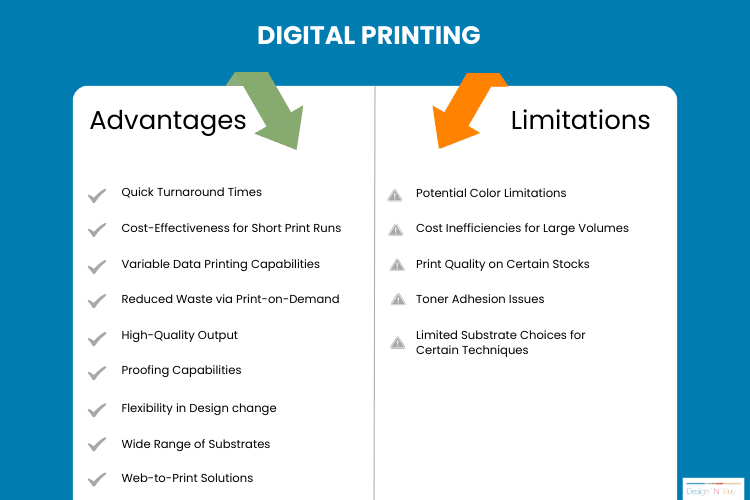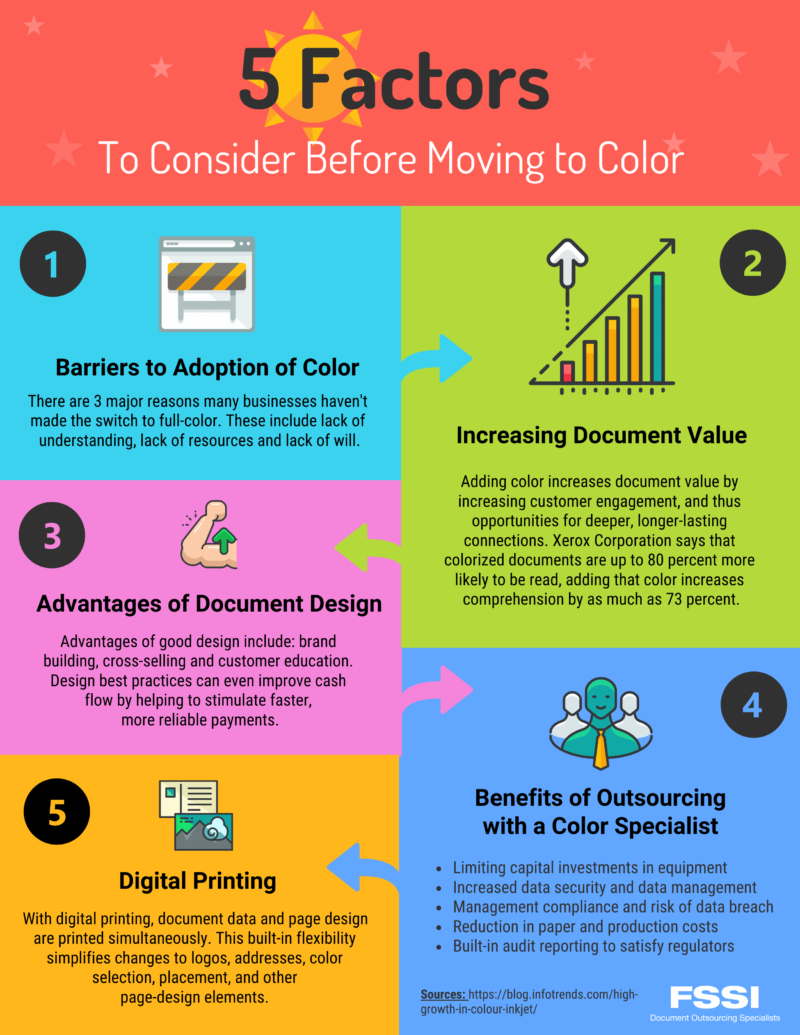Getting The Digital Printing To Work
Table of ContentsThe smart Trick of Digital Printing That Nobody is DiscussingUnknown Facts About Digital PrintingThe smart Trick of Digital Printing That Nobody is Talking AboutThe 6-Minute Rule for Digital PrintingThe Single Strategy To Use For Digital PrintingDigital Printing Things To Know Before You Buy
Variable data printing, such as direct mail with customized codes and addresses, is preferably fit for digital printing. Digital quick printing only requires 4 actions of style, review, printing and binding to obtain every little thing done. Digital fast printing has an unparalleled benefit: print on need.According to PMMI, electronic printing enables brands and suppliers to react swiftly to customer needs while enhancing the supply chain, reducing warehousing cost and waste, and enjoying faster time to market. That all audios excellent, but just how does this innovation do all that? The major differentiator of these modern technologies is that there are no set-up costs and no plates with digital printing.
The smart Trick of Digital Printing That Nobody is Discussing
According to Wikipedia, the best difference in between electronic printing and standard approaches such as lithography, flexography, gravure, or letterpress - Digital Printing is that there is no requirement to change printing plates in electronic printing, whereas in these analog printing methods the plates are repetitively changed. This results in quicker turn-around time and lowers cost when utilizing digital printing.
Digital printing is very adaptable, so it's very easy to make adjustments to the package style rapidly. It all goes back to the plates.
Much more stock can suggest even more waste later on. With standard printing approaches, short-run printing is simply not feasible. Since a wonderful design can make or damage your item, electronic printing constantly creates high-grade, clear and vivid graphics each time. Digital printing on versatile pouches adds the bright, dynamic, and accurate graphics that practically bid customers to connect and touch them.
Digital printing is the process of printing digital-based images directly onto a selection of media substrates. There is no need for a printing plate, unlike with countered printing. Digital documents such as PDFs or desktop computer publishing files can be sent out directly to the digital printing machine to print on paper, image paper, canvas, material, synthetics, cardstock and other substrates.
The Basic Principles Of Digital Printing
According to PMMI, digital printing enables brand names and producers to react promptly to client needs while improving the supply chain, minimizing warehousing cost and waste, and appreciating faster time to market. That all noises wonderful, but just how does this modern technology do all that? The major differentiator of these modern technologies is that there are no set up fees and no plates with digital printing.
This results in quicker turn-around time and reduces expense when using electronic printing.

The Buzz on Digital Printing
With conventional printing approaches, short-run printing is simply not feasible. Due to the fact that a great design can make or damage your product, digital printing regularly creates high-quality, clear and vivid graphics each time.

According to PMMI, digital printing allows brands and makers to react swiftly to client demands while improving the supply chain, minimizing warehousing expense and waste, and enjoying faster time to market. That all audios wonderful, but how does this technology do all that? The significant differentiator of these technologies is that there are no set-up fees and no plates with electronic printing.
See This Report on Digital Printing
According to Wikipedia, Learn More the best difference in between electronic printing and standard methods such as lithography, flexography, gravure, or letterpress is that there is no demand to replace printing plates in electronic printing, whereas in these analog printing methods home plates are repeatedly changed. This results in quicker turnaround time and decreases cost when utilizing electronic printing.
Speedy manufacturing means obtaining your item to market faster. It also suggests it's much easier and faster to make changes in the future, when you alter a dish, include a SKU, or create seasonal packaging. Digital printing is very flexible, so it's simple to make changes to the plan design rapidly. Continued Everything returns to home plates.

The 45-Second Trick For Digital Printing
Digital printing is the process of printing digital-based images directly onto a variety of media substratums. There is no demand for a printing plate, unlike with countered printing. Digital documents such as PDFs or desktop computer posting data can be sent directly to the electronic printing press to print theoretically, picture paper, have a peek here canvas, material, synthetics, cardstock and other substrates.